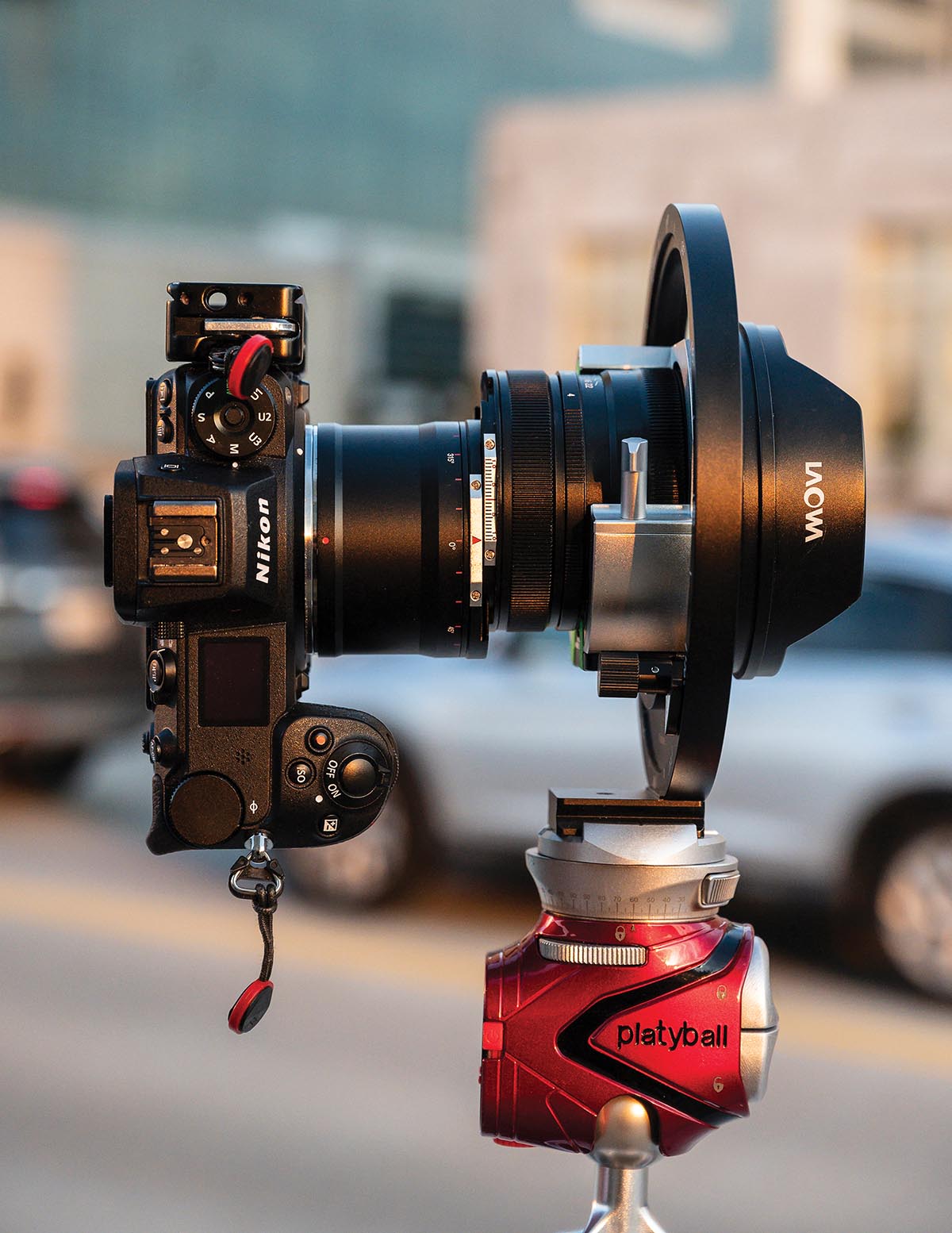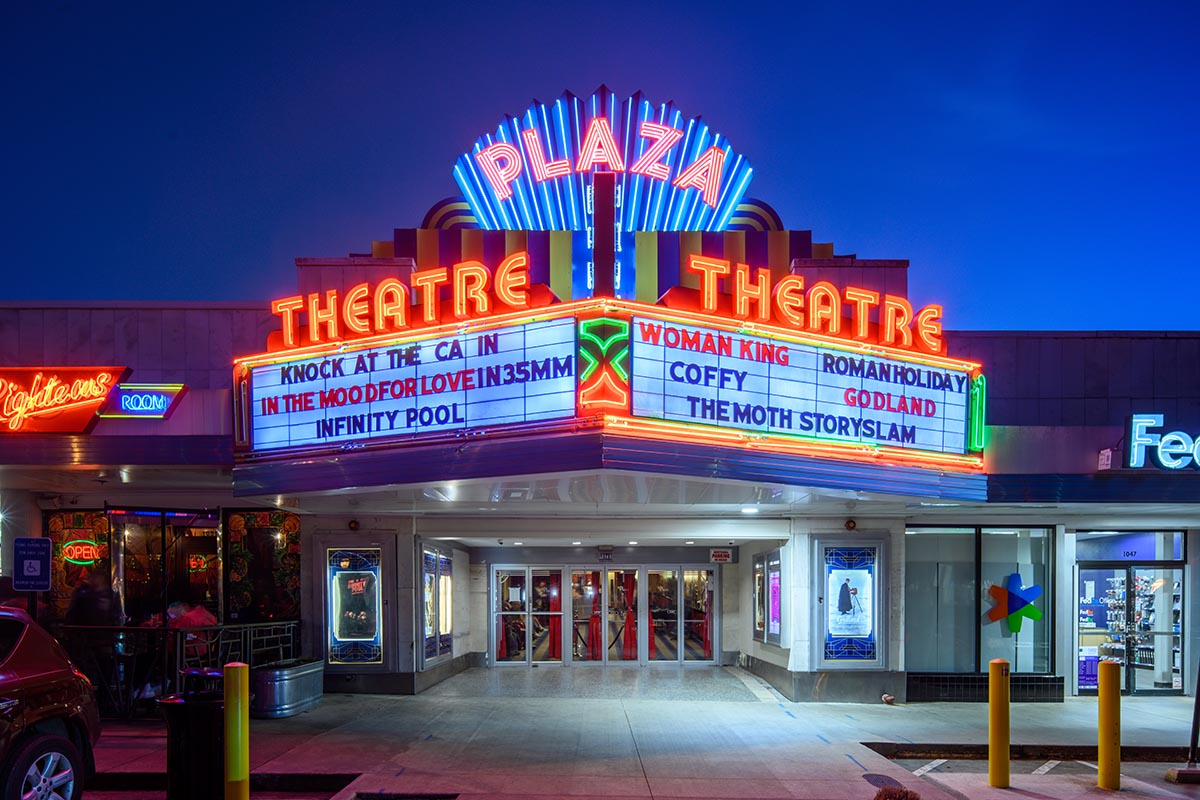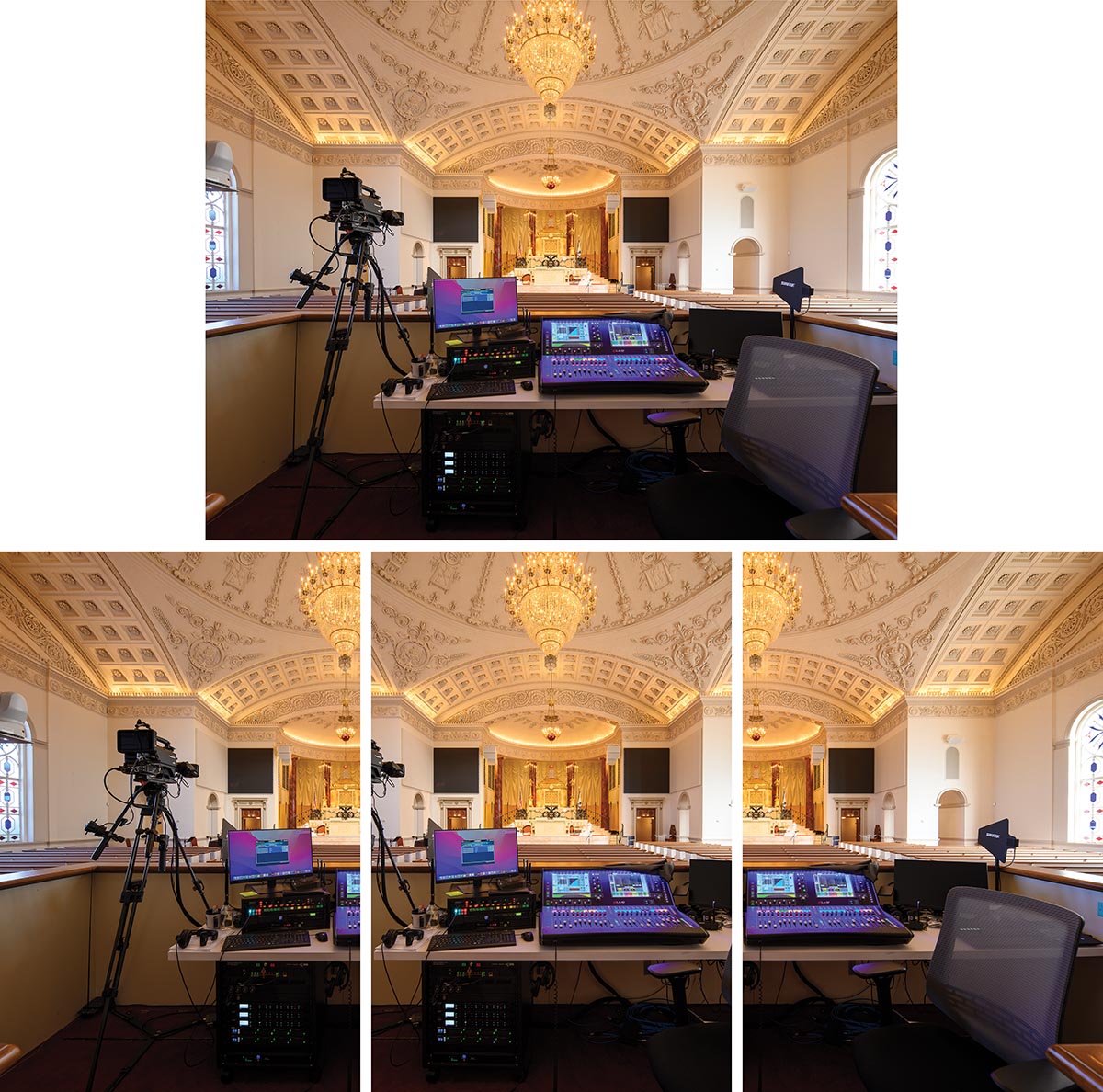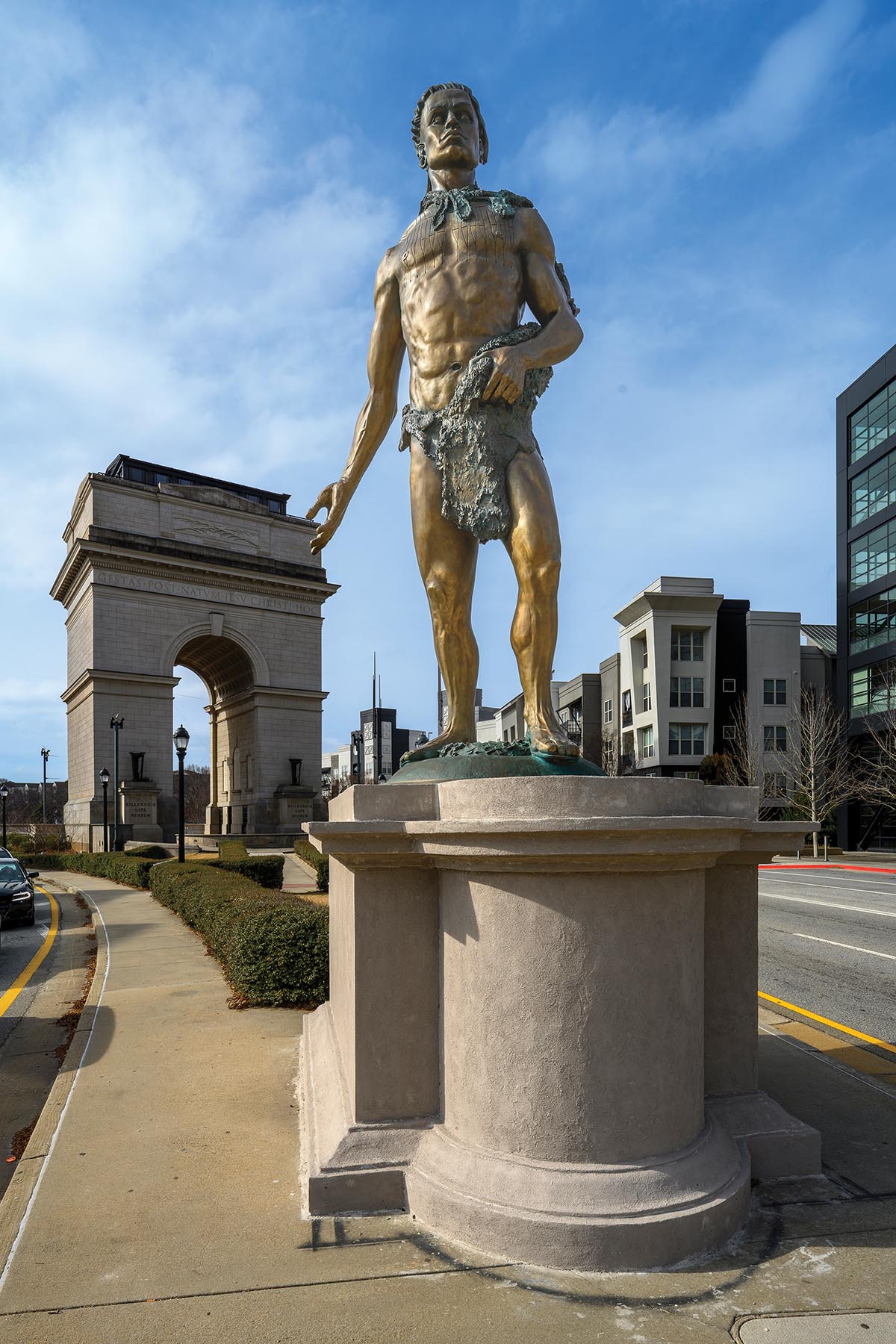
The Laowa 20mm f/4 Zero-D Shift is a wide-angle lens from Venus Optics, a small lens shop with a reputation for making unique, high-quality lenses for a range of camera mounts. What distinguishes it from other contemporary 20mm lenses are the shift movement, manual focus, manual aperture setting, and the complete lack of electronic connections to the camera. For full-frame and APS-C format cameras, Venus optics makes this lens with Canon EF and RF, L alliance (Leica, Sigma, and Panasonic), Nikon F and Z, Pentax K, and Sony E mounts, and also in Fujifilm’s medium-format G mount. All versions sell for $1,099. For this review, I tested it with a 45.7-megapixel Nikon Z 7II.
First, let’s consider whether shift lenses are still valuable tools for professional photographers. There are readily available software programs—Adobe Lightroom, Photoshop, Capture One Pro, and others—that use interpolation to manipulate perspective rendering. There are also high-resolution cameras and excellent ultra-wide-angle lenses. These camera, lens, and software combinations allow us to level the camera, crop out unwanted foreground in post, and deliver a photo with high enough resolution to satisfy many clients.

Though modern camera, lens, and software combinations allow photographers to manipulate perspective rendering, a shift lens allows you to capture a straightforward, higher resolution and higher quality image with the perspective you want.
The problem is one of time. For pro photographers, time spent processing is not a profit center. By getting things as right as possible in the capture, it’s possible to shed unprofitable minutes and hours, leaving you with more time and mental energy for photographing and marketing. In addition, by using the full resolution (or at least more of the resolution you paid for in your camera), you can deliver higher quality finished images to clients and customers. Finally, a lens with a shift movement has the potential to be a creative tool for environmental portraiture, group portraits, and product photography. That can help you stand out against your competition. For those reasons, I still see shift lenses as valuable tools for photographers with architectural, real estate, industrial, and product clients.
Like most wide-angle lens designs, the Laowa 20mm f/4 Zero-D Shift uses the inverted telephoto, or retrofocus optical path. In a telephoto lens, positive lens group is the first in the optical path, and a negative lens group is toward the rear. In between are other groups that correct for optical aberrations and decrease the amount of falloff in illumination toward the corners of the frame. Telephoto formulas allow long focal length lenses to be physically shorter than their actual focal length. But with wide-angle lenses designed for use with SLRs, reversing the basic telephoto formula allows room for the reflex mirror to operate in an SLR camera.

Using the lens with the optional shift lens support allow for photographs with a much wider angle of view while maintaining undistorted rectilinear characteristics without parallax errors.
For this lens, the optical path is 16 elements in 11 groups. Two elements have aspherically curved surfaces, and three others are made of extra-low dispersion glass to minimize optical aberrations and geometric distortions and improve transmission characteristics. The outer surface of the front element has Laowa’s Frog Eye Coating to repel moisture and oils. The close-focusing distance lens is just under 9.84 inches; the subject-to-sensor magnification ratio is 0.17X. From fully open to the smallest f/stop of f/22, the aperture remains circular thanks to the curved edges of the 14 blades. An engraved, white depth-of-field scale, easily read even in low light, facilitates setting the hyperfocal distance for the desired depth of field and aperture.
Like standard rectilinear 20mm lenses on a full-frame camera, the Laowa 20mm f/4 Zero-D Shift takes in a 61.9x94.5-degree angle of view. On full-frame cameras, a standard lens needs to project a 43mm diameter image circle, but this lens projects an image circle of 65mm, enabling shift even on the larger sensor used by Fujifilm for their G cameras. In addition, the lens rotates on its mount, so you can change the direction you want to shift in click-stopped 15-degree increments.

Using shift keeps the camera square to the vertical and the horizon, maintaining parallel verticals. It also uses the full resolution of the camera as opposed to using an ultra-wide rectilinear lens and then having to throw away half the photo.
While the shift movement alone is beneficial, using the lens with the optional shift lens support when you plan to stitch overlapping images during processing enables you to produce photographs with a much wider angle of view, up to 118 degrees, while maintaining undistorted rectilinear characteristics without Parallax errors. Parallax errors occur when you change the point of view in the photos you will combine to make a panorama. If there are objects nearer to the camera that overlap objects in the background, changing the point of view changes the geometric relationships.
With conventional lenses, panoramic photographers solve the parallax problem using specialized and complex tripod mounts. These require finding the position of a lens’s entrance pupil (sometimes called the nodal point) and then turning the camera and lens while making the photos. Setting up the panoramic rig can be time-consuming, often leading to parallel lines rendered as converging curves. Using Laowa’s shift lens support (SLS) accessory ($250) with the company’s 20mm and 15mm Zero-D Shift lenses simplifies the process while eliminating the parallax problem.
For pro photographers, time spent processing is not a profit center. By getting things as right as possible in the capture, it’s possible to shed unprofitable minutes and hours.
Ellis Vener
The SLS is a two-part tripod mount. The inner piece is a collar that holds the body of the lens. This collar rotates inside a rotating ring that mounts to the tripod. Supporting the lens instead of the camera maintains the point of view because the camera moves instead of the lens when using the shift movement. Suppose you only use the SLS to rotate the camera and lens, stitching the overlapping photographs together. In that case, you make a daisy panorama with a much broader and taller view, even after cropping the stitched image to remove the jagged edges of the daisy’s petals. Combining rotation of the SLS with shift takes in an undistorted, extremely wide-angle high-resolution photograph.
The SLS has some issues, however. The design requires mounting the lens in the SLS before mounting the camera on the lens. The way the collar fits around the lens makes it more challenging to focus the lens and set the aperture than it should be. It would also be nice to have 7.5-degree increments in addition to the 15-degree increments. And finally, on the SLS I purchased, I needed to use tabs of gaffer tape as padding on the ridges of the collar to keep the lens from wobbling in the collar.
Shift lenses are great for architectural, real estate, environmental portraiture, and product photography and in capturing those types of images in-camera with as close to the desired look as possible. The Laowa 20mm f/4 Zero-D Shift provides top-tier quality at a good price.
Ellis Vener is a contributing editor.

